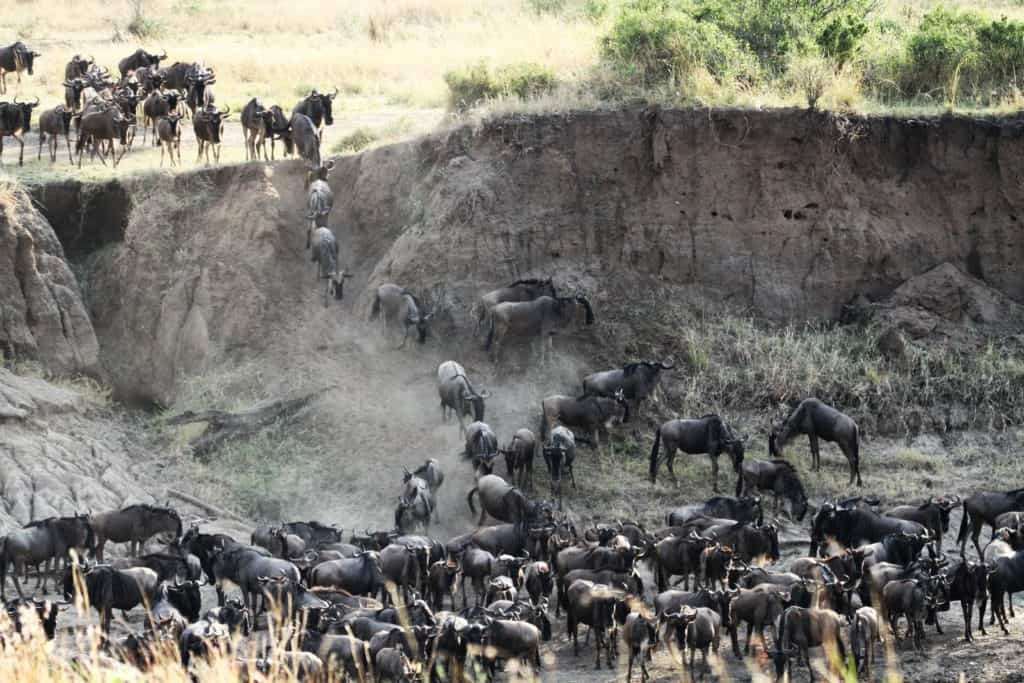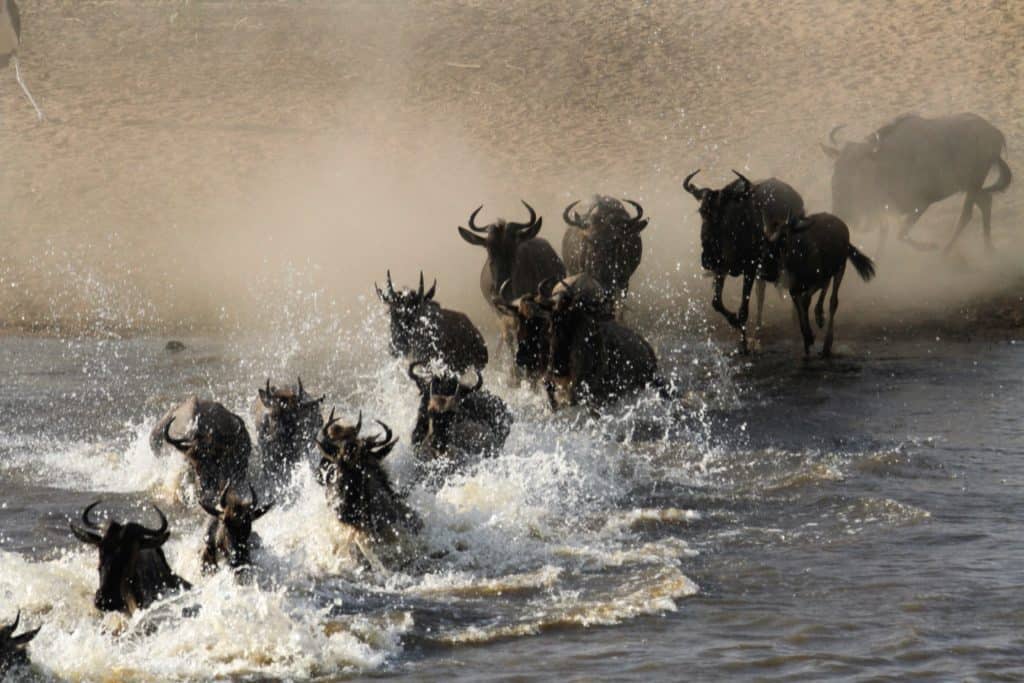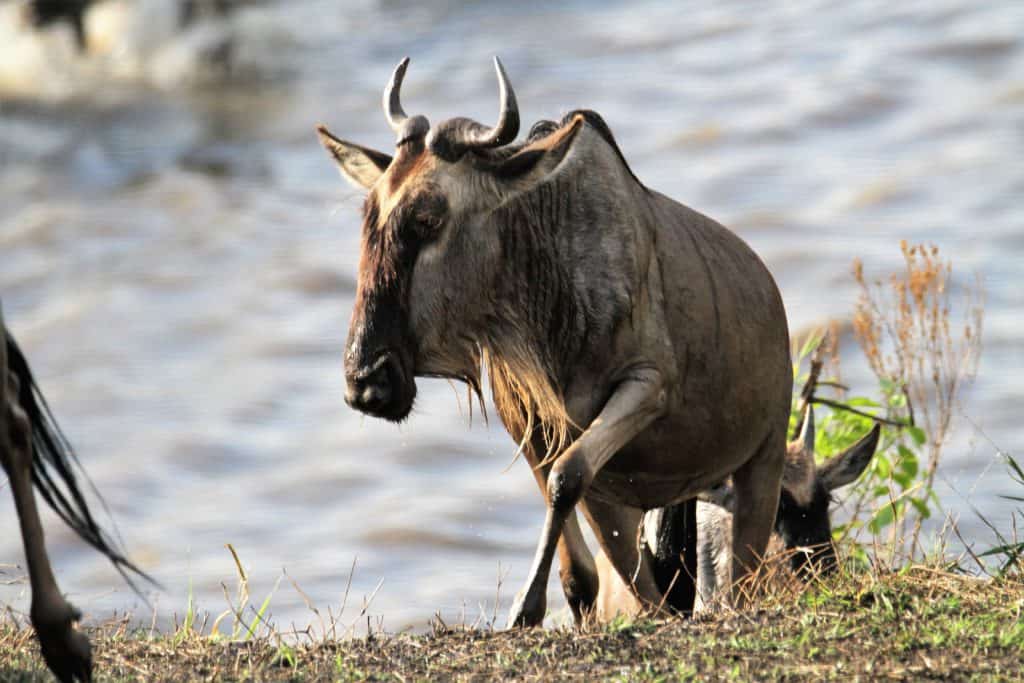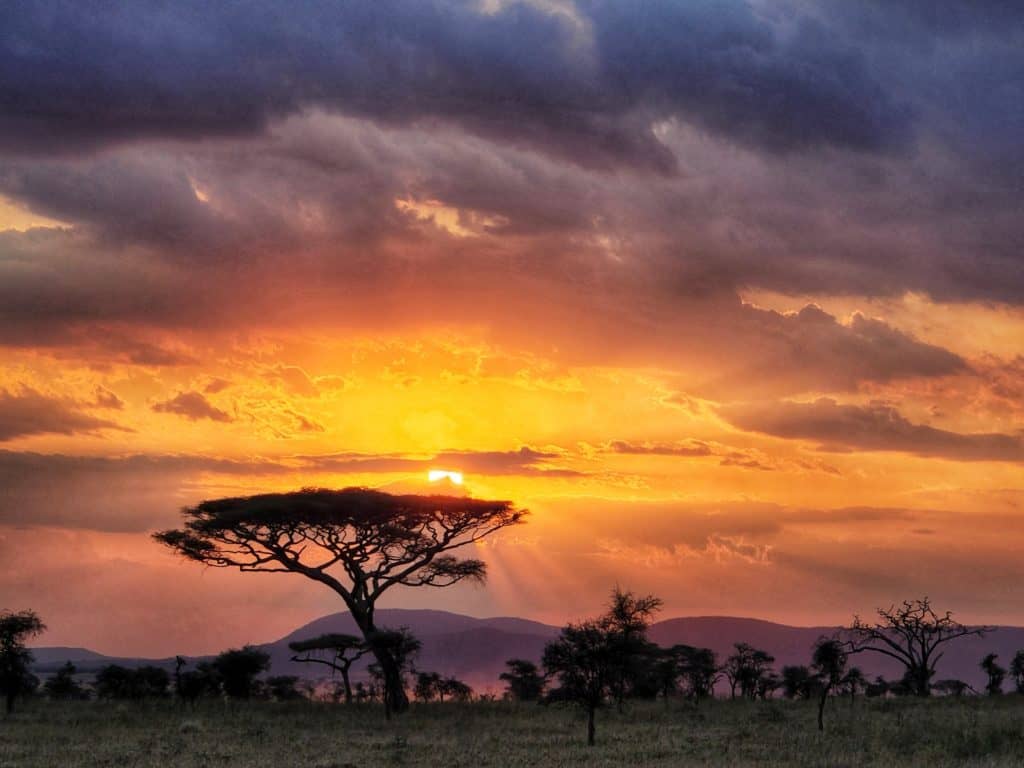This trip report and photos were shared by Dave and Meg K., travelers with The Wild Source to Tanzania in August 2022.
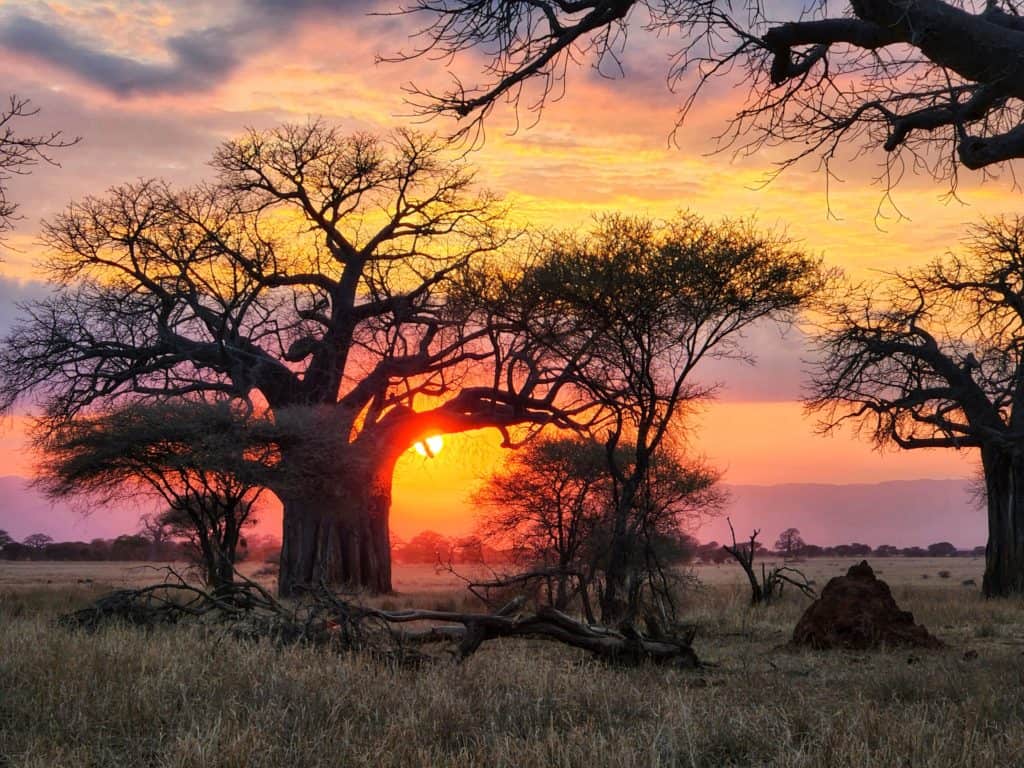
My husband Dave met Bill Given many years ago during a vulture capture and tagging operation in Botswana. Dave was a zoo vet and that experience led him to meet many biologists and conservationists who shared a passion for wildlife. So, it was a no brainer to travel with The Wild Source on our first River Crossing Safari in 2018. In 2020, just before Covid we returned to Tanzania for the calving season – covering much of the same ground. This year we signed up for another River Crossing adventure, just the two of us, led by the very experienced and skilled guide Fadhil Magoye – this would be our third trip with Fadhil – the first with his dad Deo too.
The trip was booked a year in advance, not knowing Covid would still have some lingering impacts on travel in general. But, working with Exito Travel, recommended by TWS, we got tickets from Denver to Kilimanjaro through Chicago and Doha on a combo of American Airlines and Qatar. As airlines struggled to rebuild international routes every change we encountered was met with frustration and concern – would we really get there?
On August 2nd, we arrived at JRO. Step one done. The airports were a cluster, the boarding no better but, we got there. Fadhil met us at the airport for our trip into Arusha and 2 nights at the African Tulip – our favorite, boutique hotel in a quiet part of town. We’d come from 90+ degree days so the cooler temps were welcomed. There are great birding opportunities around the African Tulip grounds.
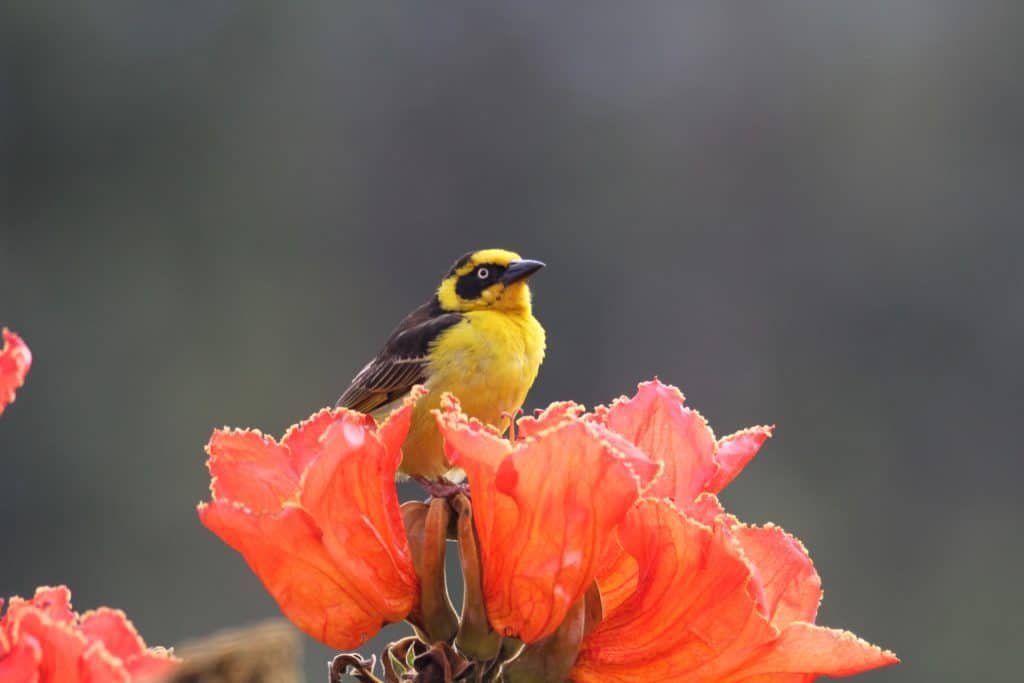
Arusha National Park
This year, with our extra day planned, Fadhil met us on the 3rd for our first visit to Arusha National Park, in the shadow of the formidable Mt Meru. As their website describes it harbors incredible wildlife species and vegetation. We saw some animals and birds here that we did not encounter on the rest of the trip. So glad we added this to the already wonderful itinerary.
We spotted secretive red duiker, blue monkeys, black and white colobus monkeys, lesser and greater flamingos, bush buck, banded mongoose, hadada ibis, a serval – just to name a few we didn’t see elsewhere on the trip. As we drove through an open field with a large group of olive baboons skulking around, a large male locked eyes with our vehicle, jumped on the back as we passed, came in through the open roof, grabbed one of our boxed lunches and jumped back out. Immediately on the ground he began tearing the box and its contents open. It took about 10 seconds to commit his crime and seeing him in the vehicle put a new perspective on just how big they are. Lucky for us, those boxed lunches are chock-full so we had plenty left to share. Back to Arusha for our last night and bountiful buffet dinner at the African Tulip.
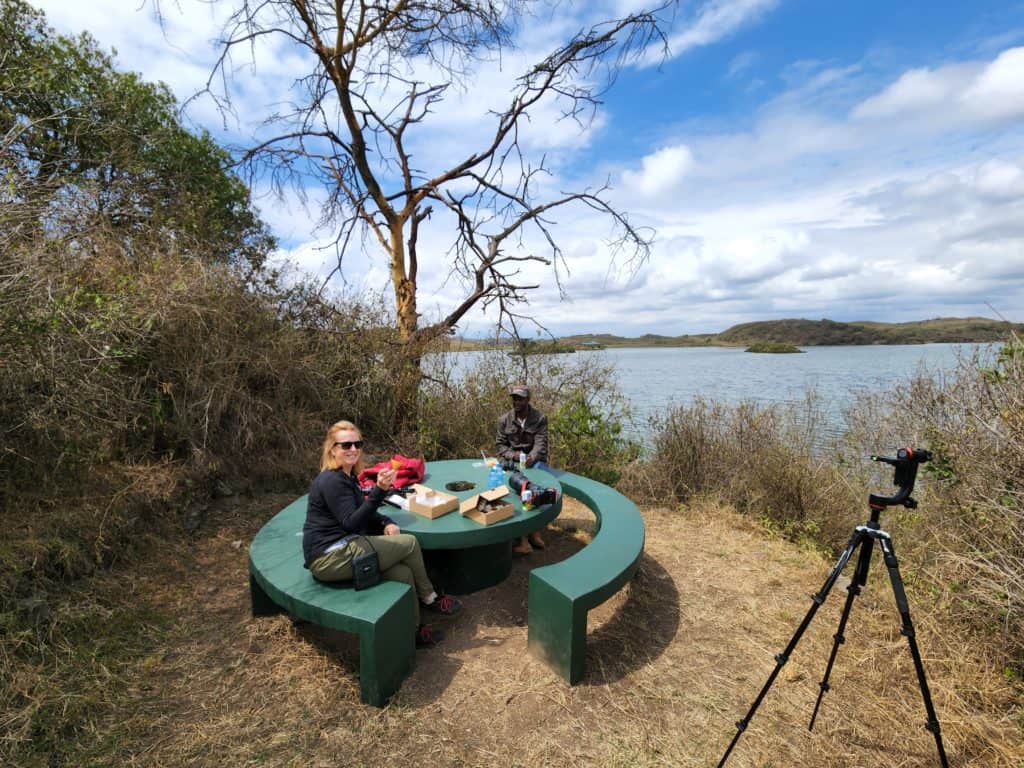
Tarangire National Park
Today, our Safari begins in earnest with an early pickup before our 2-hour, mostly highway drive to Tarangire National Park. After a glitch at the gate, we headed onto the dirt road for our first “official” game drive. I’d started making a written list of everything we would see, even if it was already on the list from another day. With all the pictures we’d eventually have to edit, this seemed a quicker reference.
This park is vast and packed with flora and fauna but is most famous for big elephant families. The distinctive Baobab Tree (Tree of Life) is a key feature that affords wonderful landscape photography. The park is home to a massive wildlife migration where seasonally the rains provide a generous water source for all. Elephants can be seen in large groups drinking with zebra, giraffe, wildebeest, yellow billed storks and herons, to name a few. Lions find plenty to hunt here as we witnessed with the telltale red paws and muzzles, having come from a recent kill. There are many areas with varied topography, but our favorite is always the large watering hole not far from the main gate.
We spent almost 2 hours watching the lions drink and laze on its banks, to be ousted by the arriving elephants, to be replaced by the easily spooked zebra. Sunset and closing time made us end our day as we drove past jackals, ostrich, warthogs, impala, dik-dik and so much more; love birds, go away birds, grey headed kingfisher, shrikes, red billed oxpecker, buffalo weavers….the list goes on! We headed to our first camp of the trip – Ndovu Tented Lodge. We were disappointed that it was too late for a swim in their lovely pool, the only one we’d have on the trek. But we came for the wildlife so…a cool swim replaced by a lovely dinner.
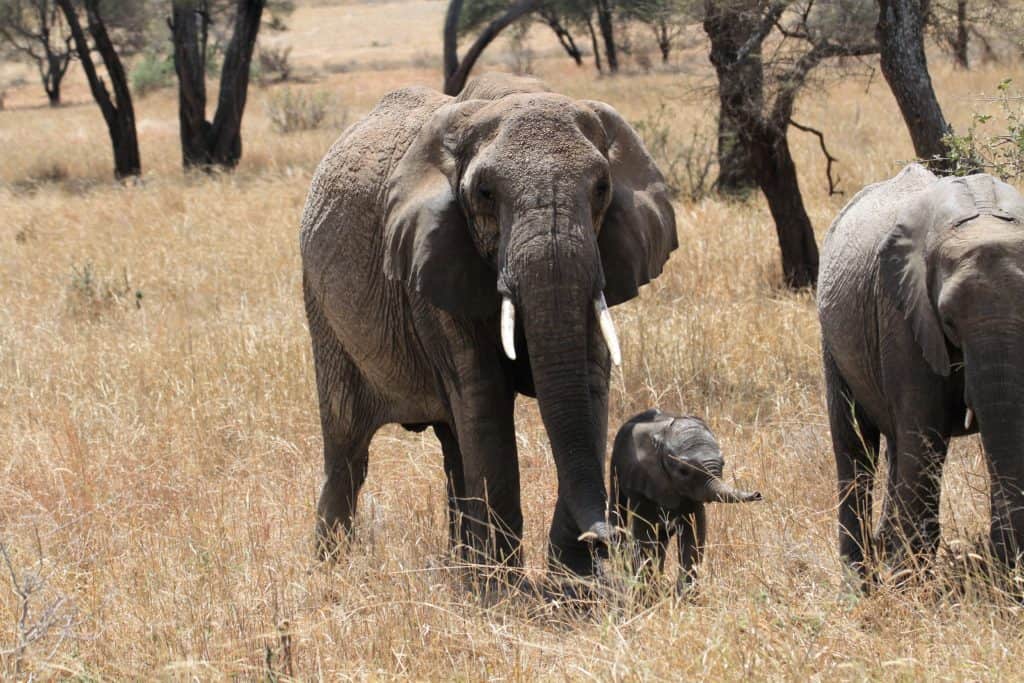
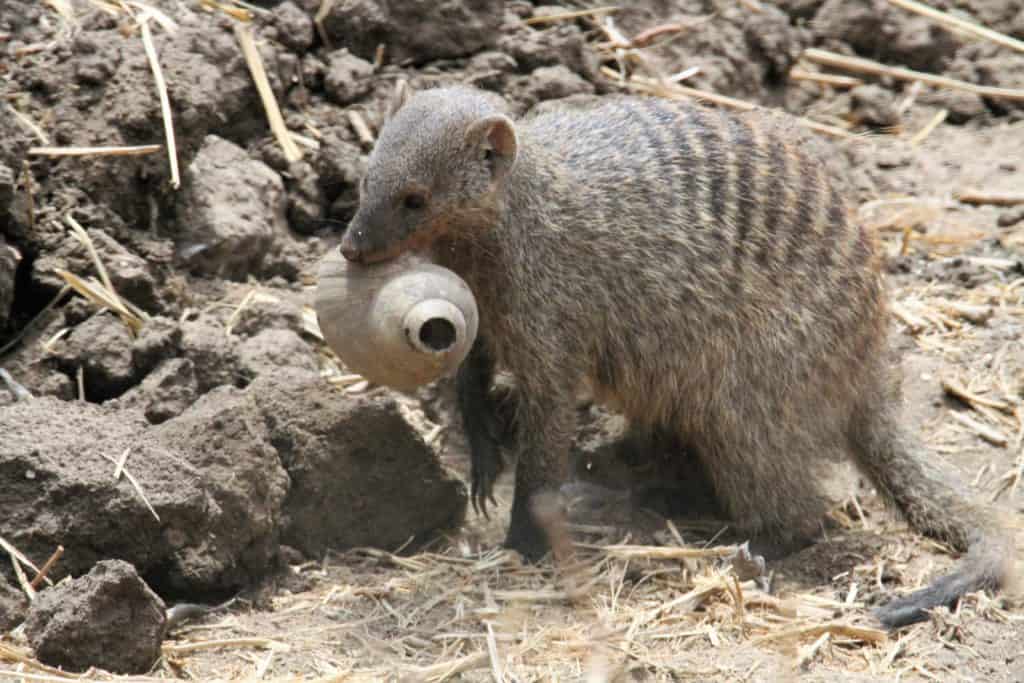
Ngorongoro Crater
August 6th put us back through Tarangire Park where we watched 4 tawny eagles fight over a kill – along a ridge adjacent to the road. They didn’t pay us a bit of attention as we sat for 30 minutes watching their battle over who gets to keep the prize. Another wonderfully close elephant encounter with a youngster learning how to strip a tree from mom and aunties. Now for a 3-hour drive to the gate for Ngorongoro Crater. We’d been here before and as with Tarangire, though visitation has gone up in general, it was no time before we had our permits stamped to make our way to the next 2-night stay at Lemala Crater Camp. Nestled in the lush rim of the crater under a blanket of acacia trees, we arrived as the campfire was ablaze and the sun was setting.
The typical tented camp routine is a bucket shower (hot!) to wash off the dust, a quick photo op of the gorgeous evening skies and right to another delicious dinner. Come with an appetite because all the camps serve soups, fresh rolls, a main course and a creative dessert. Up at 5:45 on the 6th, quick but yummy breakfast and out for the day with our boxed lunch to the Crater floor. We were prepared, having been before, for a huge temperature drop at night and morning with packable down jackets, gloves and knit hats. Even the tents have hot water bottles warming the beds at night. A very welcome amenity!
Immediately upon descending the road Fadhil is on the hunt for the best wildlife experiences of the day. He never, never disappoints! On the 1 ½ days here, we saw lion, hippos, cape buffalo, eland, giraffe, dik-dik, reedbuck, Thomson’s gazelle, golden jackal, zebra, wildebeest, lots of hyena, plus ostrich (“cleaning” off his feathers in a dusty depression in the dirt), secretary birds, Kori bustards, hamerkop, francolin, green pigeons, cape teal, black bellied bustards, a Eurasian harrier, Northern Anteater, sun grouse, blacksmith lapwing, snake and bateleur eagles, orange bellied parrot, lilac breasted roller (plentiful throughout the trip but never tired of trying to get the perfect shot), morning thrush, eastern pale goshawk, osprey and the highlight – a Giant Eagle Owl and a family of 5 Southern Ground hornbills fighting over a snake.
Our lunch was spent at a very large picnic area where new bathrooms had been installed to accommodate the crowds that flock to this spot. It was around 2 so most of the vehicles were leaving; except for a group of about 30 choir members from a church, resplendent in their “uniforms”, gathered in a circle where they started moving and singing the most beautiful songs of praise. We were so lucky to have stopped just at that time. They generously offered me a spot in their circle as they could see my enthusiasm take shape in my own form of dancing. It was quite an experience.
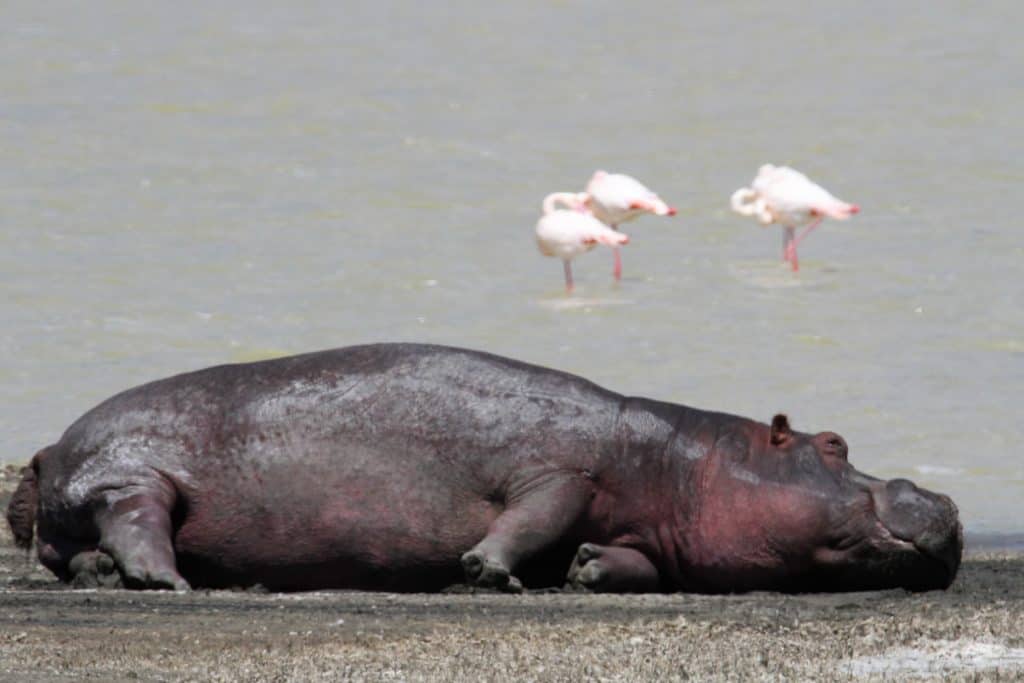
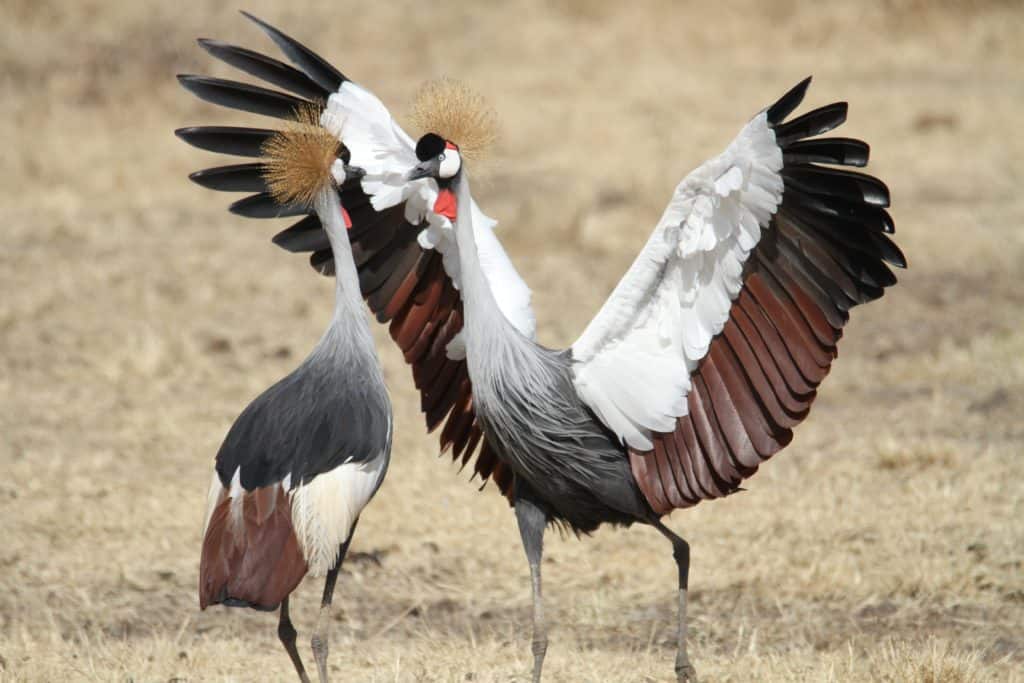
Oldupai Gorge & Central Serengeti
One more night at Lemala, then another very early start and back on a more traveled road towards the Oldupai Gorge – the seat of Mankind’s Creation and one of the most important paleoanthropological sites for the research of human evolution. A wonderful museum, gift shop and interesting lecture makes you stop and wonder how and where our species came from. A worthwhile detour and highly recommended. As we exited the highway for the short drive from the Oldupai entrance we saw a group of about 8 giraffes were crossing the road behind us– lumbering across, with a good horizon line behind them for another awesome photo op.
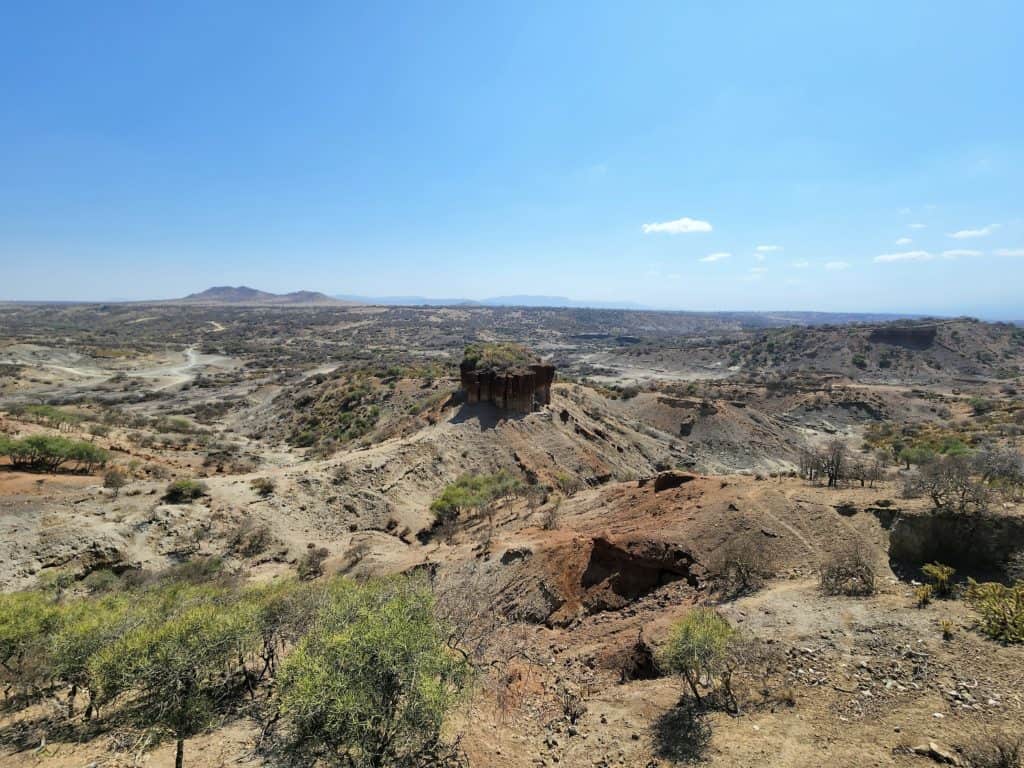
Continuing from there, in 3 hours we’d arrived at the Serengeti National Park gate – a quite dusty and rocky road without any stops. As you traverse from one park to another you pass through many villages where people are just getting on with their day. We passed women selling the honey from their hives in reused soda bottles. A motor cyclist with steel gutters strapped to his shoulders looking like he could topple over or hit an oncoming car any minute. We did see lots of hoof stock along the way, but it’s better to make a beeline for the gate where it takes some time to get the permits stamped. All along this route, our trusted guide , Fadhil, tirelessly and patiently listens to us, engages in our banter, takes the same opportunities for awesome photo ops and drives, drives, drives. We felt his warmth and sincerity the minute he greeted us at the airport. He knows so much about so much and wants to share that knowledge with all his clients.
The picnic area at the gate was mobbed. It’s quite large and shaded with ample restrooms. There is a short hike up Naabi Hill that offers a spectacular view of the Serengeti – endless miles of endless plains at this point. We’ll spend the next 6 hours heading towards our camp, Lemala Ewanjan, in the Central Serengeti. Still on the lookout for a “special sighting”, Fadhil overhears on the radio, there are leopards in a tree – a mom and cub – with a recent kill the young cat is chowing down on. It was about 4PM so the light wouldn’t be good for long. But there were only a handful of other vehicles, so we got a great parking spot and spent about an hour watching and waiting for mom to make a move. She was completely relaxed on a long low branch while her offspring was in the notch of the tree, with the gazelle carcass clearly visible and being well, consumed. Nature at its finest. We also saw lappet faced vultures, lions, Cokes Hartebeest, elephant, olive baboons, hippos and hyrax – they were in the trees, so I guess “tree”hyrax”!
Back to camp with a dusk siting of a leopard in a tree, for a really spectacular dinner (spinach and mushroom stuffed pork tenderloin with an amazing reduction sauce) and more fancy desserts. The Lemala camps have set up “drawer” charging for your tech stuff. Rather than hook up each tent, they have numbered drawers (coinciding with each tent) in the “lounge” tent with charging stations. There’s no issue about vying for available charging as we’d had in other camps on earlier trips. Very clever and gives everybody an equal shot.
On the 8th, Fadhil suggested both breakfast and lunch to go so we left camp at 6AM for another 12-hour day in the field. It always amazes me how the guides know the “road” system in these parks. Many of them barely look like roads. I’ll bet an aerial view shows hundreds of crisscrossed tracks that would take years to navigate successfully. We will spend 2 nights here with almost 2 full days in this part of the park. We see lions, waterbuck, Topi, goshawk, crested snake eagle, elephants, warthogs et al. Our breakfast is at the picnic area for the Serengeti Visitor center – another worthwhile stop. As Dave retreats from the restroom, he spots a spectacular blue agama lizard in the tree. You see many rock agamas throughout Tanzania but even our guide grabbed his camera with excitement over this blue headed tree agama.
Today, the highlight is a pride of lions, on a kopje, with 2 sets of young – maybe several months apart – the older 3 with their mom and the youngest 3 further up on the rocks. Again, with only a few vehicles there, we had ample time to sit and watch them sleep, arouse, climb down to their aunt and swat at each other in play. Before we left our hour-long visit, we got to see all the cubs descending to the cover of trees and higher ground. Amazing. We head back for another spectacular sunrise and delicious dinner.
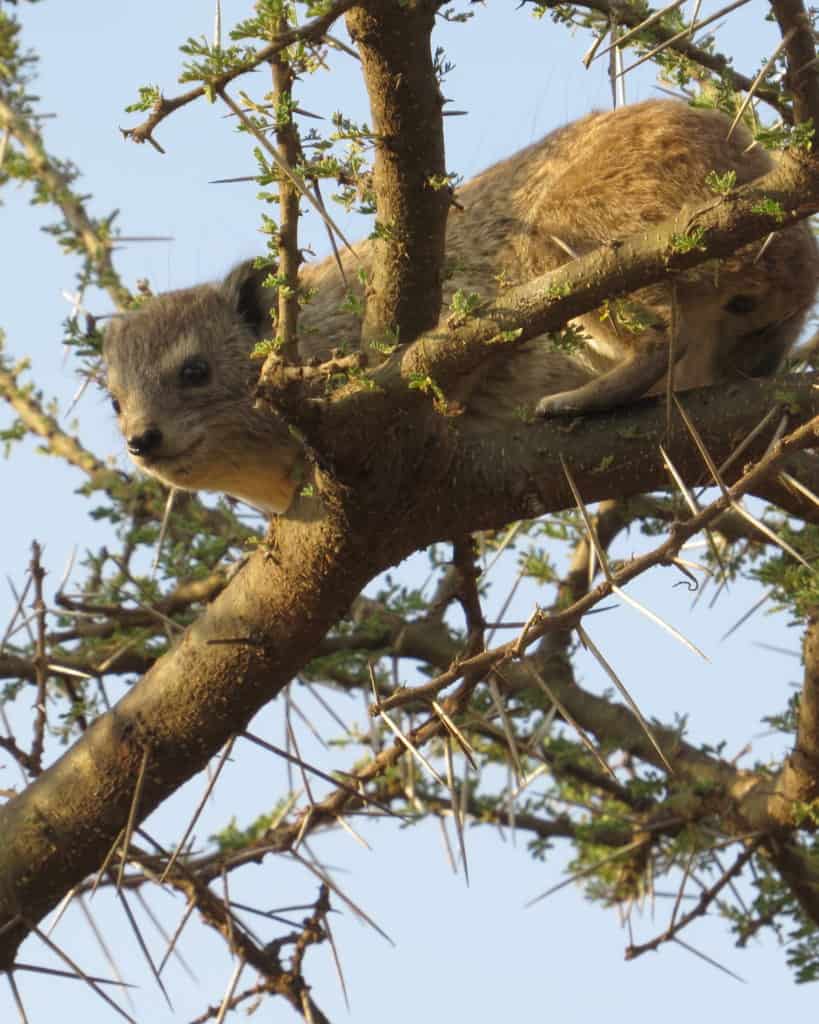
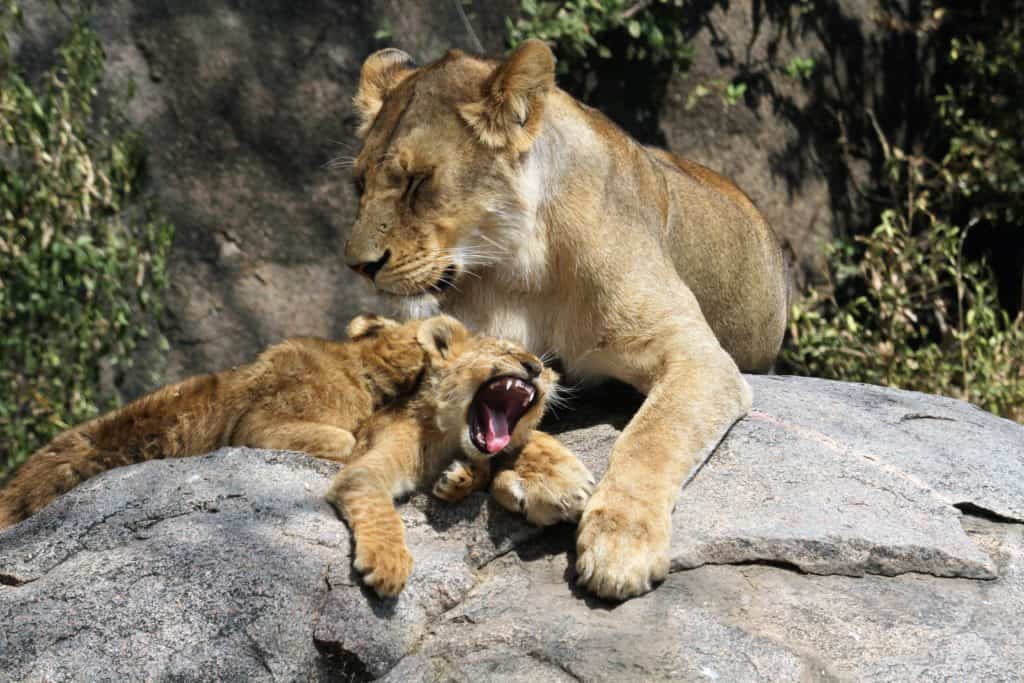
Northern Serengeti
Today, we’re headed north. Rather than drive the circuitous route through the park, Fadhil drives northwest out of park boundaries, passed Fort Ikoma, then due north to the Lamai Ranger post. We pass several villages with the last one before the park for a pitstop to buy more water for the last 5 days of our safari. A very young girl is waving as we wait and we start “dancing” together with me gyrating in my seat, arms waving, and she following my every move. As the park boundary approaches, we pass many villagers ending their day, with women carrying groceries etc. on their heads and young people walking home from school. Fadhil’s grandfather has a farm on the boundary, so we stop to say hi to his cousin who is managing the farm. We get to camp with time to greet and be greeted by friends still working at this mobile camp, a shower and a wonderful welcoming dinner by Chef Paul and staff.
The morning game drive begins at 6, cool and dark with breakfast and lunch packed and thousands of wildebeest grazing along the road as we head to our first river crossing. We’re not far from crossing 1 and we hear on the radio there is activity. There was. Just a small group of animals crossing towards our side of the river but enough to whet our appetite. The next 3 full days and ½ day offer so many wonderful, memorable, exciting wildlife encounters it’s impossible to put into words or share pictures of. Like anything else you’ve ever read about or seen on TV, nothing can replace being there.
Now the other camp biologist, David Maira, Fadhil’s cousin who we’d met on 2 previous trips, accompanies us every day. He studies big cats for The Wild Source and is a fountain of information on their movements and habits. Each day we set out for 12 hours, eating our meals under the best tree, away from any other tourists, search out lion, elephants, zebra, birds, hoof stock….whatever…..until we hear about a potential crossing. The radios do come in handy in allowing us to slowly traverse the park without having to sit at a numbered crossing they may never come to. You learn quickly, the wildebeest are nervous and alert to potential predators when staging at the bank of the Mara River – they may get down there, there may be a lot there, but they can just as quickly turn around and go back. This is what being with an experienced driver makes so crucial to a successful safari. They have no magic wand to ensure the siting, but they are magicians when it comes to the best of the parks.
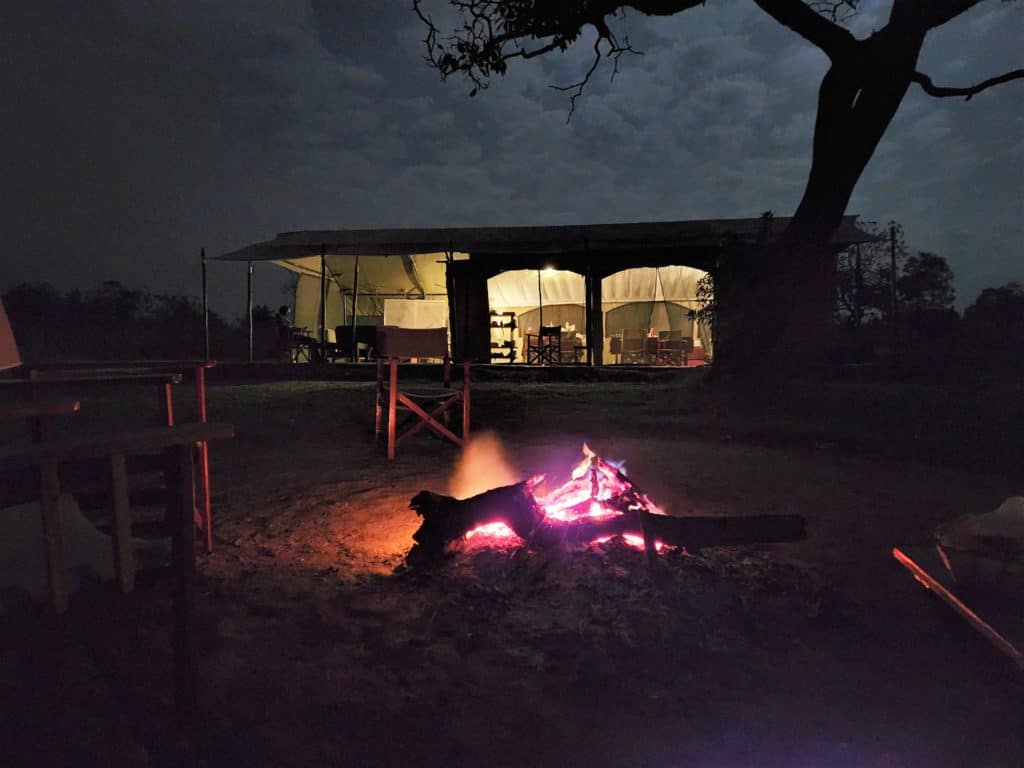
We spend an hour watching a family of elephant bathe in a pond where one hippo lurks on the banks. As we pass other vehicles, Fadhil stops to chat with friends and colleagues and gets info on animal activity in the nearby area. We learn of a cheetah sleeping next to a rock in tall grass – sure enough, it’s there! Our first and only cheetah of this trip. We see so many vultures and storks near old prey fighting for the last morsels. Dave has done research on vultures for years so he is very excited when we spot a white-headed vulture hulking down what might be a nest on a tall tree. This vulture is in serious decline so the next day, we head to the same spot to hopefully get a better view and, we do! With a meat morsel in its mouth obviously feeding newly hatched chicks. Yeah!
Along the river, a sandy beach exposes almost 70 hippos, smashed together, resting with several more bathing. Another family of 17 elephants cross in front and behind us to drink and spray sun protecting sand on their backs – flinging it up with their trunks. Further on 3 lions are sleeping next to their recent zebra kill – ubiquitous red stained muzzle and bloated stomachs. And aside from the crossings, we are maybe with 1 or 2 other vehicles. The next 3 crossings, one each day, are even more spectacular – numbers and frenzy. All thru the 5 days we are here we see too many species to list here – grey headed malachite and pied kingfishers; banded mongoose; klipspringers; Nile monitor lizard; crocs (2 near bloated wildebeest carcasses that failed to make the crossing; buzzards and eagles; larks and shrikes; pipits and canaries; another serval; yellow winged bats in the tree above us for our breakfast on the hood morning; guinea fowl and francolins; and right by the airstrip, a magnificent African crowned eagle.
And each night, we shower, relax by fire, chat with the newest member of the camp who is eager to become a biologist and guide, eat another of Chef Paul’s culinary creations and go over the day with either Fadhil or David. During our stay, there would be a “super moon” and a meteor shower. We did see the moon albeit through a cloudy sky. We just can’t say enough about the camp and staff – attentive, caring, interested, interesting, friendly, and so eager to learn and grow in their knowledge of the park and its wildlife.
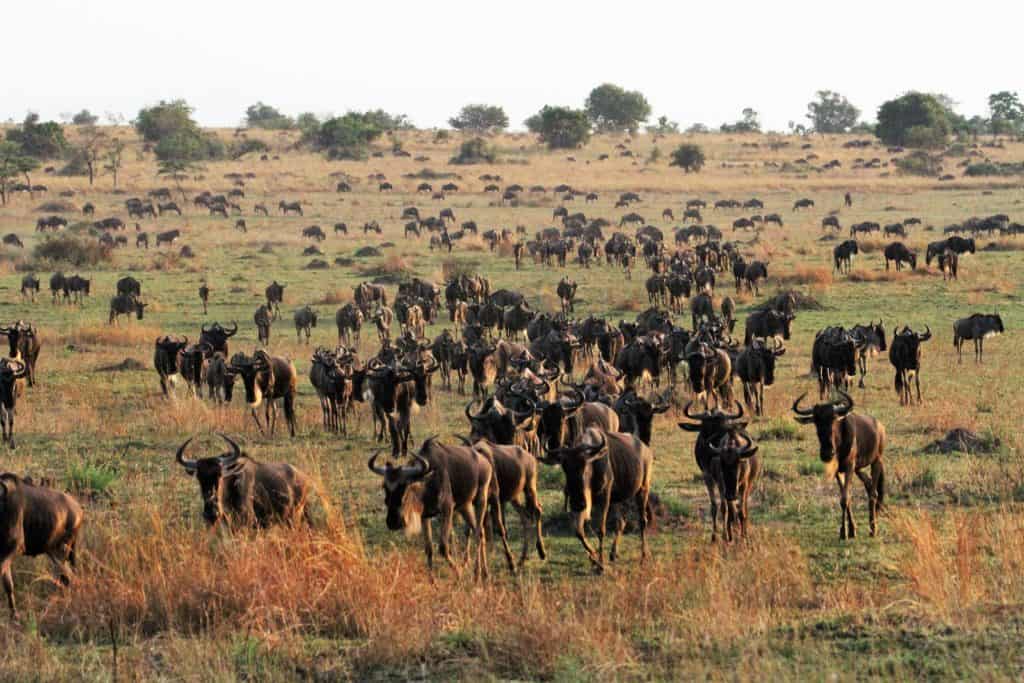
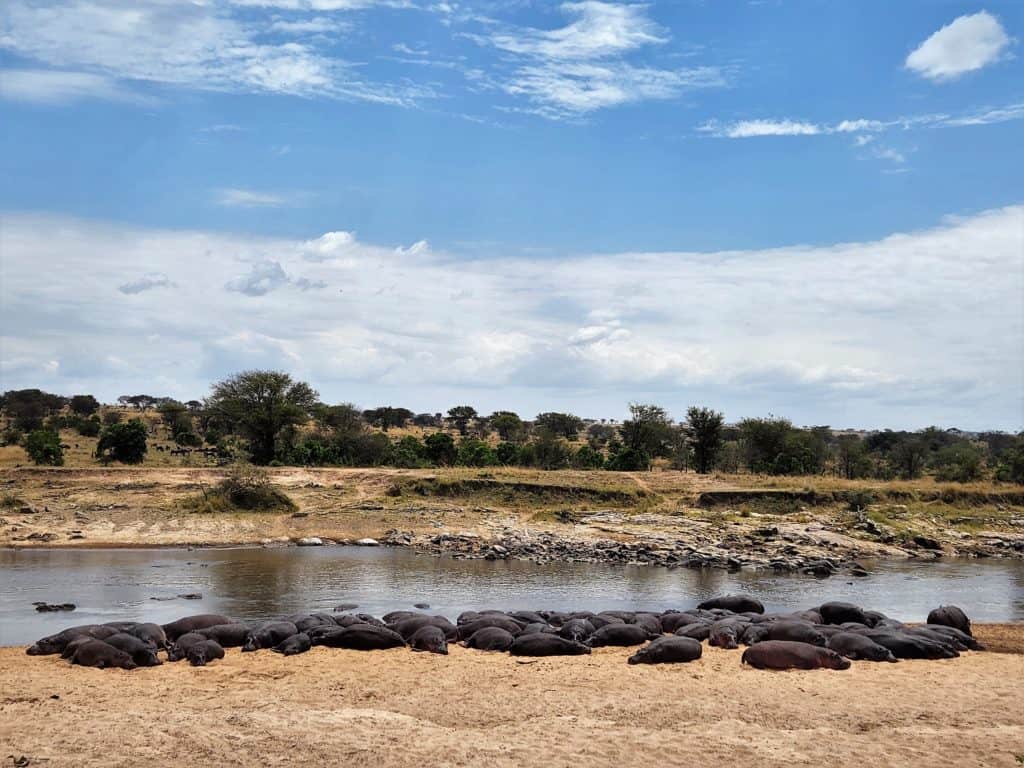
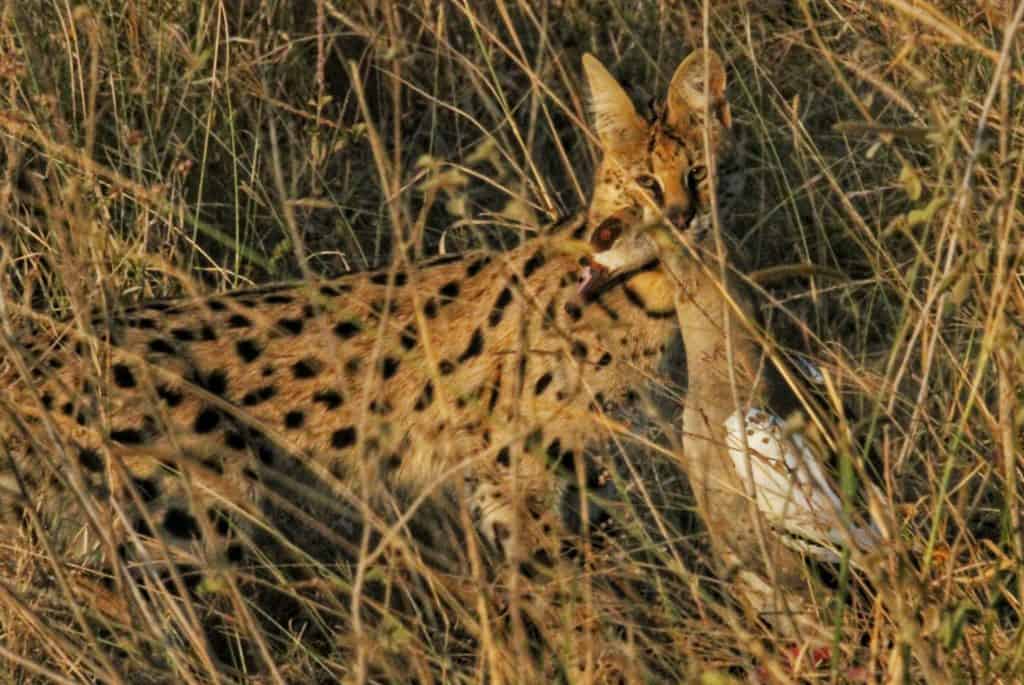
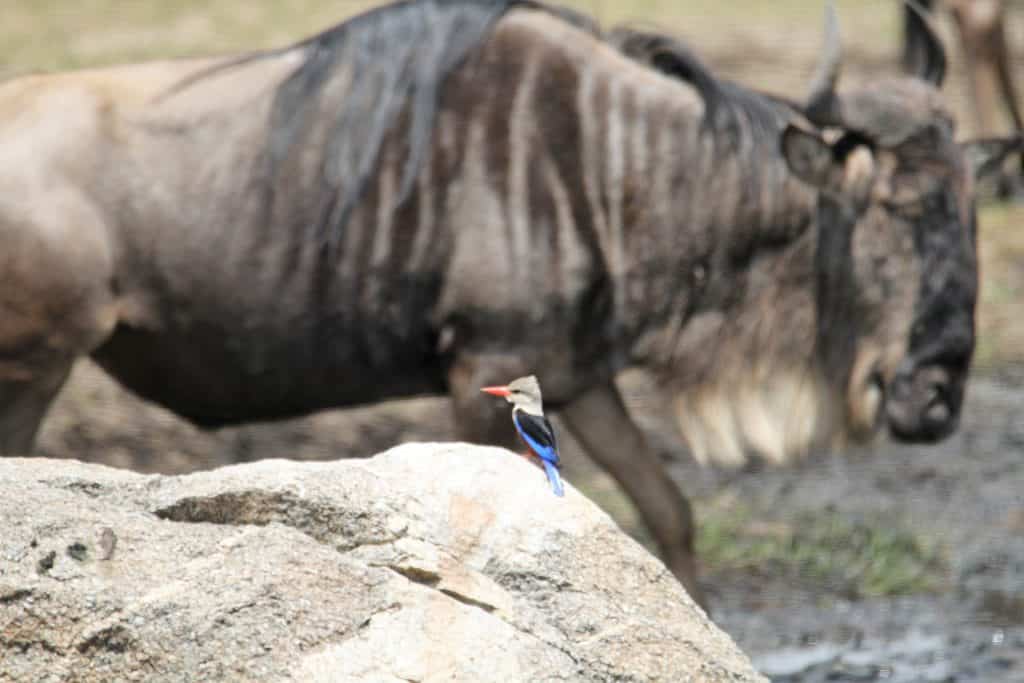
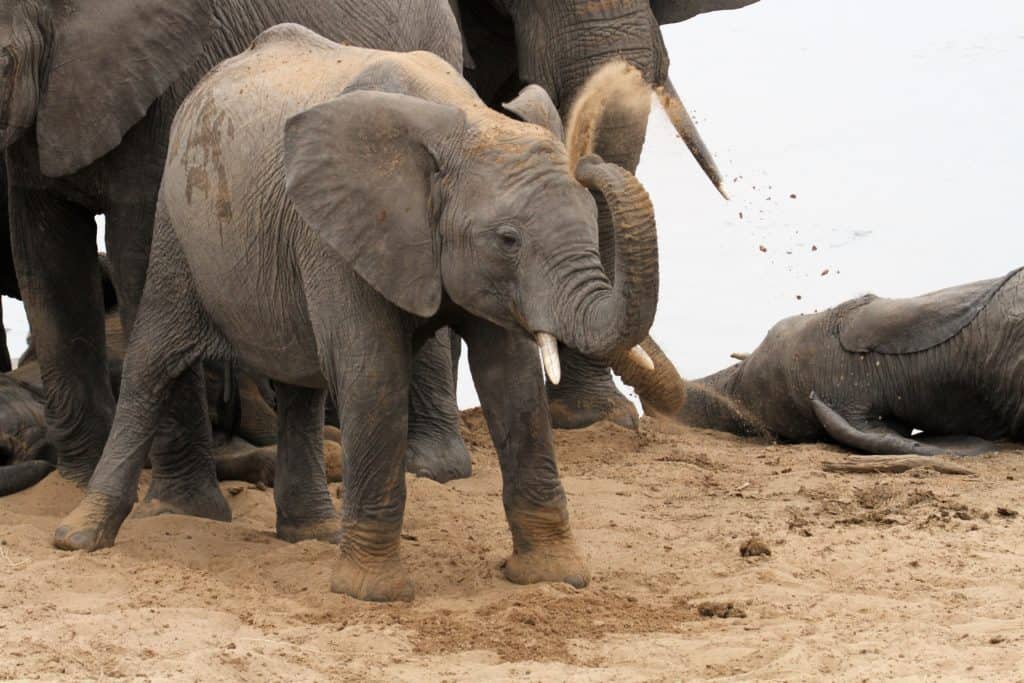
We leave on the 14th – still up at 6, breakfast at camp today, a 2–3-hour game drive between Njozi and the airstrip for our flight back to JRO. We come to the fork in the road – one way to the airstrip, the other to crossing 1. Fadhil hears word, the wildebeest are there and crossing. Should he go? Yes, please let’s go!
He grabbed the wheel harder, we held on harder, and we flew the 20 minutes to the spot. Oh my – this was the biggest herd we’d seen yet, in progress, but still coming. We have the photographers golden light of morning while the animals are jumping, swimming, slipping on rocks, emerging soaking wet, grunting and moving right passed our vehicle. The sound of them in the water is deafening – splash, crash, vocalizing, calling for their young. This is the epitome of Tanzania and the Mara River. We are leaving this life changing trip satisfied, happy and so thankful for Fadhil and The Wild Source and everyone else from Mariam in the Arusha Office to Bill and his staff in Golden, Colorado.
Till next time – Still lots to explore in Africa.
